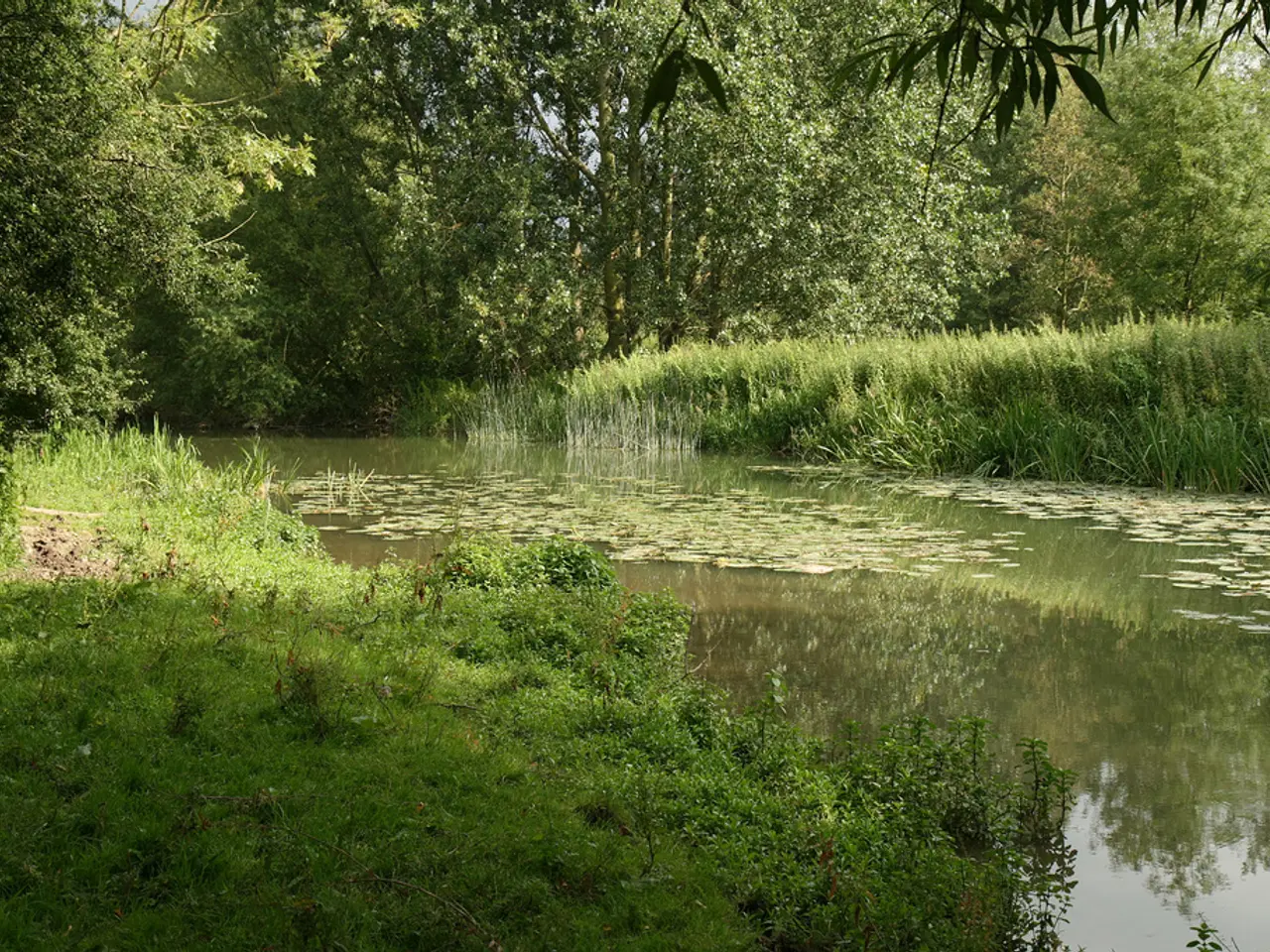Guidelines for Water Recycling in Minnesota's Landscaping Scenarios
In Minnesota, the use of treated municipal wastewater for landscaping is regulated primarily under land application and reuse guidelines that align with state and federal water quality standards. While a unique rule solely for landscaping reuse of treated municipal wastewater was not found, the state's regulations emphasise nutrient management, monitoring for contaminants, and adherence to reuse guidelines to protect water quality.
The Regulations and End-Use Specifications Explorer (REUSExplorer) provides a synthesis of state laws and policies governing water reuse across the US, including Minnesota. It is important to note that REUSExplorer is for informational purposes only and does not replace or modify any state or federal laws.
Minnesota's Water Reuse for Landscaping Specifications, as per the Minnesota Pollution Control Agency (MPCA) (2010), detail quality parameters for disinfected tertiary water for residential landscaping, parks, playgrounds, school yards, and golf courses. For disinfected tertiary water, turbidity should be less than or equal to 2 NTU (filter effluent turbidity) and less than or equal to 10 NTU (single sample maximum). Total coliform in disinfected tertiary water should not exceed 2.2 MPN/100 mL (7-day median).
For disinfected secondary 23 water (used in cemeteries and roadway landscaping), total coliform should not exceed 23 MPN/100 mL (does not exceed in more than one sample in a 30-day period). No phosphorus or nitrogen specifications are provided in Minnesota's Water Reuse for Landscaping Specifications for disinfected secondary 23 or tertiary water.
The MPCA and other state bodies provide guidelines for the land application or reuse of treated municipal wastewater, focusing on protecting surface and groundwater from nutrients and contaminants. Recent laws in Minnesota include programs to reduce nitrogen loads through incentive programs for farmers, implying broader nutrient management importance in water reuse scenarios, including landscaping applications.
Treatment plants, such as those operated by the Metropolitan Water Reclamation District (MWRD) in nearby areas, do not fully remove emerging contaminants like PFAS, which remain a key concern for any reuse practice. Minnesota similarly monitors these pollutants and encourages source control and pretreatment requirements to protect water quality in reclaimed water use.
Implementation of treated effluent for landscaping would require compliance with state water quality standards, permits if applicable, and ongoing monitoring to ensure that neither public health nor the environment is compromised by nutrient or chemical inputs. If precise details or permit requirements are needed, consulting the Minnesota Pollution Control Agency’s current water reuse guidelines or specific municipal regulations would provide the most definitive regulatory framework.
As of now, no upcoming regulations pertaining to water reuse for landscaping were found for Minnesota. However, it is always advisable to stay updated with the latest regulations to ensure compliance.
- The Regulations and End-Use Specifications Explorer (REUSExplorer) identifies state laws and policies regarding water reuse, including Minnesota.
- The quality parameters for disinfected tertiary water for landscaping in Minnesota, according to the Minnesota Pollution Control Agency (MPCA) (2010), include turbidity and total coliform limits.
- For disinfected secondary 23 water in Minnesota, total coliform levels should not exceed 23 MPN/100 mL and should not exceed in more than one sample in a 30-day period.
- Minnesota authorities provide guidelines for the land application or reuse of treated municipal wastewater to protect surface and groundwater from nutrients and contaminants.
- In Minnesota, there are programs aimed at reducing nitrogen loads, indicating a broader importance of nutrient management in water reuse scenarios.
- Emerging contaminants like PFAS are a concern for reuse practices, as they are not fully removed by treatment plants like the MWRD.
- Minnesota monitors these pollutants and encourages source control and pretreatment requirements to protect water quality in reclaimed water use.
- Compliance with state water quality standards, permits if applicable, and ongoing monitoring are necessary when implementing treated effluent for landscaping to ensure public health and environmental safety.
- For precise details or permit requirements, consultation of the MPCA's current water reuse guidelines or specific municipal regulations is advised.
- As of now, no upcoming regulations pertaining to water reuse for landscaping have been found for Minnesota.
- It is important to stay updated with the latest regulations to ensure compliance, even if no upcoming regulations are currently found.
- Besides water reuse regulations, other related fields such as renewable energy, sustainable living, technology, education, personal finance, real estate, and data and cloud computing may play a part in promoting eco-friendly lifestyles and industry practices.




